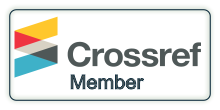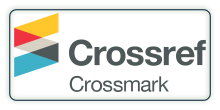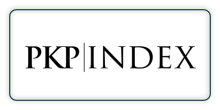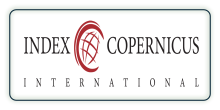IMPROVING THE RESPONSE OF PERMANENT MAGNET SYNCHRONOUS MOTORS TO DISTURBANCES USING PSO TECHNIQUES
DOI:
https://doi.org/10.29121/ijetmr.v12.i4.2025.1566Keywords:
Pm Synchronous, Motor Stability Enhancement, Pi Controller Optimization, Speed And Torque Ripple Mitigation, Dynamic Response ImprovementAbstract
Permanent Magnet Synchronous Motors (PMSMs) are widely recognized in industrial applications and have become increasingly important in the renewable energy sector, supporting the global shift toward sustainable energy solutions. This study presents a comprehensive analysis of PMSM speed and torque behavior, aiming to reduce ripple effects and enhance overall motor stability. A modified Particle Swarm Optimization (PSO) algorithm is employed to optimize the parameters of a Proportional-Integral (PI) controller under various disturbance scenarios, including sudden changes in load and speed. The proposed control strategy is evaluated using MATLAB/Simulink simulations. Results demonstrate that the optimized PI controller significantly reduces speed and torque fluctuations compared to traditional tuning methods. The improved dynamic performance is evident through reduced current oscillations and enhanced accuracy, with the system showing strong resilience against load disturbances. Furthermore, a comparative analysis highlights the superior performance of the proposed method over conventional approaches, confirming its effectiveness in achieving more stable and efficient motor operation.
Downloads
References
Ahn, J.-M., Son, J.-C., & Lim, D.-K. (2021). Optimal Design of Outer-Rotor Surface-Mounted Permanent Magnet Synchronous Motor for Cogging Torque Reduction Using Territory Particle Swarm Optimization. Journal of Electrical Engineering & Technology, 16(1), 429–436. https://doi.org/10.1007/s42835-020-00599-z
Cho, S.-K., Jung, K.-H., & Choi, J.-Y. (2018). Design Optimization of Interior Permanent Magnet Synchronous Motor for Electric Compressors of Air-Conditioning Systems Mounted on EVs and HEVs. IEEE Transactions on Magnetics, 54(11), 1–5. https://doi.org/10.1109/TMAG.2018.2849078
Cui, J., Xiao, W., Zou, W., Liu, S., & Liu, Q. (2020). Design Optimisation of Submersible Permanent Magnet Synchronous Motor by Combined DOE and Taguchi Approach. IET Electric Power Applications, 14(6), 1060–1066. https://doi.org/10.1049/iet-epa.2019.0346
Dal, Ö., Yıldırım, M., & Kürüm, H. (2019). Optimization of Permanent Magnet Synchronous Motor Design by Using PSO. 2019 4th International Conference on Power Electronics and their Applications (ICPEA), 1–6. https://doi.org/10.1109/ICPEA1.2019.8911192
Gao, J., Dai, L., & Zhang, W. (2018). Improved Genetic Optimization Algorithm with Subdomain Model for multi-objective Optimal Design of SPMSM. CES Transactions on Electrical Machines and Systems, 2(1), 160–165. https://doi.org/10.23919/TEMS.2018.8326463
Izanlo, A., Gholamian, S. A., & Abdollahi, S. E. (2020). Optimal Design of a Permanent Magnet Synchronous Motor for High Efficiency and Low Cogging Torque. International Journal on Electrical Engineering and Informatics, 12(2), 173–186. https://doi.org/10.15676/ijeei.2020.12.2.1
Kamoona, A. A., Alfadli, A. N., Alshabeeb, I. A., & AlKhafaji, A. S. (2021). Harmonic Reduction of a Synchronous Generator in a Wind Energy System. Current Applied Science and Technology, 271–282.
Kareem, H. Z. A., Mohammed, H. H., & Mohammed, A. A. (2021). Robust Tuning of Power System Stabilizer Parameters Using the Modified Harmonic Search Algorithm. IIUM Engineering Journal, 22(1), 47–57. https://doi.org/10.31436/iiumej.v22i1.1276
Kim, J.-H., Cha, K.-S., & Hwang, S.-W. (2021). Analysis of Effect of the Magnetization Distribution of multi-pole PM on SPMSM Performance Using Equivalent Magnetic Circuit Considering Dead Zone. Department of Automotive Engineering, Hanyang University, Seoul, Korea.
Kim, S., Lee, S.-G., Kim, J.-M., Lee, T. H., & Lim, M.-S. (2020). Robust Design Optimization of Surface-Mounted Permanent Magnet Synchronous Motor Using Uncertainty Characterization by Bootstrap Method. IEEE Transactions on Energy Conversion, 35(4), 2056–2065. https://doi.org/10.1109/TEC.2020.3004342
Li, Y., Zhu, C., Wu, L., & Zheng, Y. (2019). Multi-objective Optimal Design of High-Speed Surface-Mounted pErmanent Magnet Synchronous Motor for Magnetically Levitated Flywheel Energy Storage System.IEEE Transactions on Magnetics, 55(7), 1–8. https://doi.org/10.1109/TMAG.2019.2906994
Liu, X., Du, J., & Liang, D. (2016). Analysis and Speed Ripple Mitigation of a Space Vector Pulse Width Modulation-Based Permanent Magnet Synchronous Motor with a Particle Swarm Optimization Algorithm. Energies, 9(11), 923. https://doi.org/10.3390/en9110923
Luo, Y., & Liu, C. (2019). Multi-Vector-Based Model Predictive Torque Control for a Six-Phase PMSM motor with fixed switching frequency. IEEE Transactions on Energy Conversion, 34(3), 1369–1379. https://doi.org/10.1109/TEC.2019.2917616
Mutluer, M., & Bilgin, O. (2012). Design Optimization of PMSM by Particle Swarm Optimization and Genetic Algorithm. 2012 International Symposium on Innovations in Intelligent Systems and Applications, 1–4. https://doi.org/10.1109/INISTA.2012.6247024
Mutluer, M., & Bilgin, O. (2012). Design Optimization of PMSM by Particle Swarm Optimization and Genetic Algorithm. 2012 International Symposium on Innovations in Intelligent Systems and Applications, 1–4. https://doi.org/10.1109/INISTA.2012.6247024
Pulvirenti, M., Scarcella, G., Scelba, G., Testa, A., & Harbaugh, M. M. (2017). On-line Stator Resistance and Permanent Magnet Flux Linkage Identification on Open-End Winding PMSM drives.University of Catania Catania, IEEE. https://doi.org/10.1109/ECCE.2017.8096971
Sain, C., Biswas, P. K., & Banerjee, A. (2015). Design and Analysis of open Loop Model of a Permanent Magnet Synchronous Motor (PMSM) drive. Siliguri Institute of Technology Siliguri, IEEE.
Soygenc, O. C., & Ergene, L. T. (2020). Particle Swarm Optimization Implementation on PMSM design. 2020 21st International Symposium on Electrical Apparatus & Technologies (SIELA), 1–4. https://doi.org/10.1109/SIELA49118.2020.9167068
Sui, Y., Zheng, P., Tang, P., Wu, F., & Wang, P. (2018). A Five-Phase 20-slot/18-pole PMSM for Electric vehicles. International Journal for Computation and Mathematics in Electrical and Electronic Engineering, 35(2), 439–455. https://doi.org/10.1108/COMPEL-02-2015-0106
Suryakant, S., Sreejeth, M., & Singh, M. (2018). Performance analysis of PMSM drive using hysteresis current controller and PWM current controller. Electrical Engineering Department, Delhi Technological University, India, IEEE.
Thike, R. (2020). Mathematical Model of an Interior PMSM with Aligned Magnet and Reluctance Torques. University of Canberra, IEEE.
Yang, M., & Wang, X. (2009). Fuzzy PID Controller Using Adaptive Weighted PSO for Permanent Magnet Synchronous Motor Drives. 2009 Second International Conference on Intelligent Computation Technology and Automation, 2, 736–739. https://doi.org/10.1109/ICICTA.2009.413
You, Y.-M., & Chung, D.-W. (2017). Optimal Design of a Permanent Magnet Synchronous Motor to Improve Torque and Demagnetization Characteristics. Journal of Magnetics, 22(3), 423–429. https://doi.org/10.4283/JMAG.2017.22.3.423
Zawarczyński, Ł., & Stefański, T. (2019). Parametric Identification of PMSM Mathematical Model. Kielce University of Technology, IEEE.
Štulrajter, M., Hrabovcova, V., & Franko, M. (2007). Permanent Magnets Synchronous Motor Control Theory. Journal of Electrical Engineering, 58(2), 79–84.
Published
How to Cite
Issue
Section
License
Copyright (c) 2025 Ameer Kamoona, Ahmed Alfadli, Zaid Alhadrawi

This work is licensed under a Creative Commons Attribution 4.0 International License.
License and Copyright Agreement
In submitting the manuscript to the journal, the authors certify that:
- They are authorized by their co-authors to enter into these arrangements.
- The work described has not been formally published before, except in the form of an abstract or as part of a published lecture, review, thesis, or overlay journal.
- That it is not under consideration for publication elsewhere.
- That its release has been approved by all the author(s) and by the responsible authorities – tacitly or explicitly – of the institutes where the work has been carried out.
- They secure the right to reproduce any material that has already been published or copyrighted elsewhere.
- They agree to the following license and copyright agreement.
Copyright
Authors who publish with International Journal of Engineering Technologies and Management Research agree to the following terms:
- Authors retain copyright and grant the journal right of first publication with the work simultaneously licensed under a Creative Commons Attribution License (CC BY-SA 4.0) that allows others to share the work with an acknowledgment of the work's authorship and initial publication in this journal.
- Authors can enter into separate, additional contractual arrangements for the non-exclusive distribution of the journal's published version of the work (e.g., post it to an institutional repository or edit it in a book), with an acknowledgment of its initial publication in this journal.
- Authors are permitted and encouraged to post their work online (e.g., in institutional repositories or on their website) before and during the submission process, as it can lead to productive exchanges, as well as earlier and greater citation of published work.
For More info, please visit CopyRight Section






























